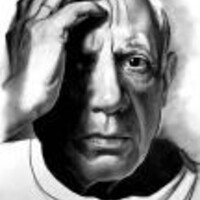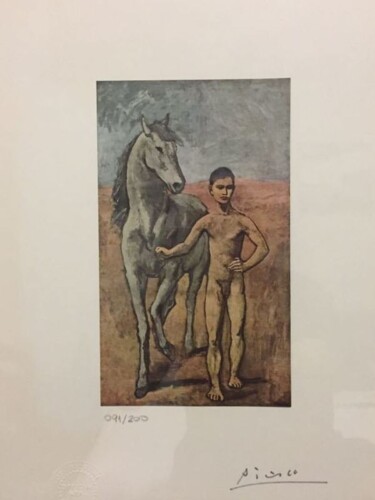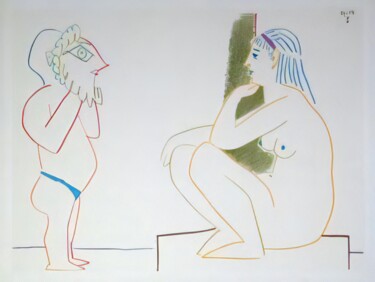Pablo Picasso was one of the most influential and renowned artists of the 20th century. He was a Spanish painter, sculptor, printmaker, ceramicist, and stage designer, known for his groundbreaking contributions to various art movements, particularly Cubism. Picasso was born on October 25, 1881, in Málaga, Spain, and he passed away on April 8, 1973, in Mougins, France.
Picasso's early works, during his Blue Period and Rose Period, often depicted themes of poverty, melancholy, and circus life. These periods were characterized by the predominant use of blue and rose tones, respectively. One of his notable works from this time is "Les Demoiselles d'Avignon," which marked a transition towards a more abstract and innovative style.
It was in the early 20th century that Picasso, along with Georges Braque, developed the art movement known as Cubism. Cubism shattered traditional artistic conventions by breaking down objects and subjects into geometric shapes and presenting multiple viewpoints simultaneously. This approach to art had a profound impact on the way artists approached representation and perspective.
Throughout his career, Picasso created a vast and diverse body of work, experimenting with different styles and mediums. He is also well-known for his contributions to Surrealism and his exploration of various artistic forms, including ceramics and sculpture.
Picasso's art often reflected his personal life, and he had a complex and colorful personal history. He had numerous relationships and marriages, which influenced the subjects of his art. His work is a rich tapestry of emotions, ideas, and influences, and he is celebrated for his ability to constantly reinvent his artistic style.
Some of Picasso's most famous works include "Guernica," a powerful anti-war painting that portrays the horrors of the Spanish Civil War, and "The Weeping Woman," a part of his series on the Spanish Civil War's suffering. Picasso's impact on the art world is immeasurable, and his legacy continues to influence artists and art enthusiasts worldwide. His ability to push the boundaries of art and constantly innovate has made him an iconic figure in the history of modern art.
















 Venderequadri
Venderequadri
 KANTIC ART GALLERY
KANTIC ART GALLERY
 Royal Palave Gallery
Royal Palave Gallery
 BOCCARA ART Galleries
BOCCARA ART Galleries
 Viva la Vida Art Gallery
Viva la Vida Art Gallery
 Internet Art Gallery
Internet Art Gallery
 Bejart
Bejart
 Images
Images
 Hélène Blancher
Hélène Blancher
 Royal Palace Gallery
Royal Palace Gallery